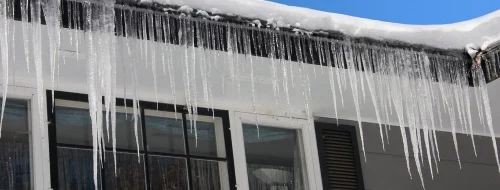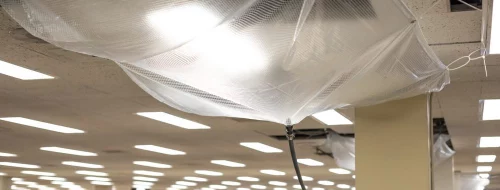Winter in the Chicago area has their share of snowstorms and cold weather. When ice and snow begin to pile on your roof, can lead to problems if your attic isn’t properly insulated. Snow begins to melt, but due to irregularities in temperatures on your roof, it will refreeze, eventually causing the formation of ice dams – which can then lead to trapped water, and eventually flooding inside your attic. In order to understand the issues that ice dams can cause – let’s look further into what they are and how they’re caused.
How Ice Dams are Formed
It takes a few factors to form an ice dam.
- If your attic is not properly insulated, it will allow heat to escape, causing snow to melt. As the melted snow flows down to cooler points on the roof, the snow will refreeze. Once it refreezes, it causes ice to build-up on the eves of the roof and gutters.
- The sun itself will heat up the snow, causing the melt, and eventually cooler temperatures will cause ice to form on the roof. Ice then prevents any additional melting snow and water from draining properly into the gutters as it should, which eventually leads to backups causing damage to walls, ceilings, insulation, and other areas in the home.
Water Damage from Ice Dams Can Cause Mold Growth
Once ice dams form, water can build up under the ice as explained above. While the water is trapped it can seep under shingles, loosening them and allowing water to enter your home. As water and moisture accumulate inside your home, this eventually leads to mold and mildew, especially if left untreated or unnoticed.
Mold thrives on moisture and feeds on organic matter like wood, drywall, carpet, etc. An ideal temperature for mold is between 5 and 38 degrees, allowing it to thrive in an environment exactly like an attic. As long as these conditions are met, mold will continue to grow until a professional team is called to remove the problem.
How to Prevent Ice Dams
The best way to handle mold from ice dams is to keep ice dams from forming in the first place. A few ways to keep ice dams at bay are:
- Ensure your attic is properly ventilated. This means testing exhaust fans before winter hits and checking moisture levels before they become an issue.
- Clean your gutters twice a year. Keep them clear of any leaves and other debris that may prevent water from draining freely.
- Insulate your attic properly, including all ductwork. This will keep temperatures regulated and heat from escaping, as well as humidity at an acceptable level.
- Ensure all bathrooms are vented through the roof and not any other part of the home.
- Check that any air bypass, where warm air leaks through small cracks and openings, are sealed. Any access ports in closets and ceilings – these are all areas of concern.
How to Melt Ice Dams
If you do notice ice dams formed on your roof, here is how to remove them.
- As tempting as it is, do not chisel the ice with an ice pick or shovel. Use a roof rake to remove the snow from your home.
- Fill a pair of pantyhose with calcium chloride and lay it across the ice dam and gutter. Do not use rock salt on your roof!
- If you notice a leak in your attic, take a box fan and blow cold air towards the area where the leak is occurring. This will freeze the leak and act as a plug until professionals can repair the roof and water damage.
Call in the Professionals
At McMahon Services, we have crews that specialize in repairing water damage and removing mold from homes that experience issues caused by ice dams. Our water damage restoration teams are available to help 24/7 and serve all of Chicago and surrounding areas. Call us today if you find water damage in your home to get your home back to normal as quickly as possible.








0 Comments